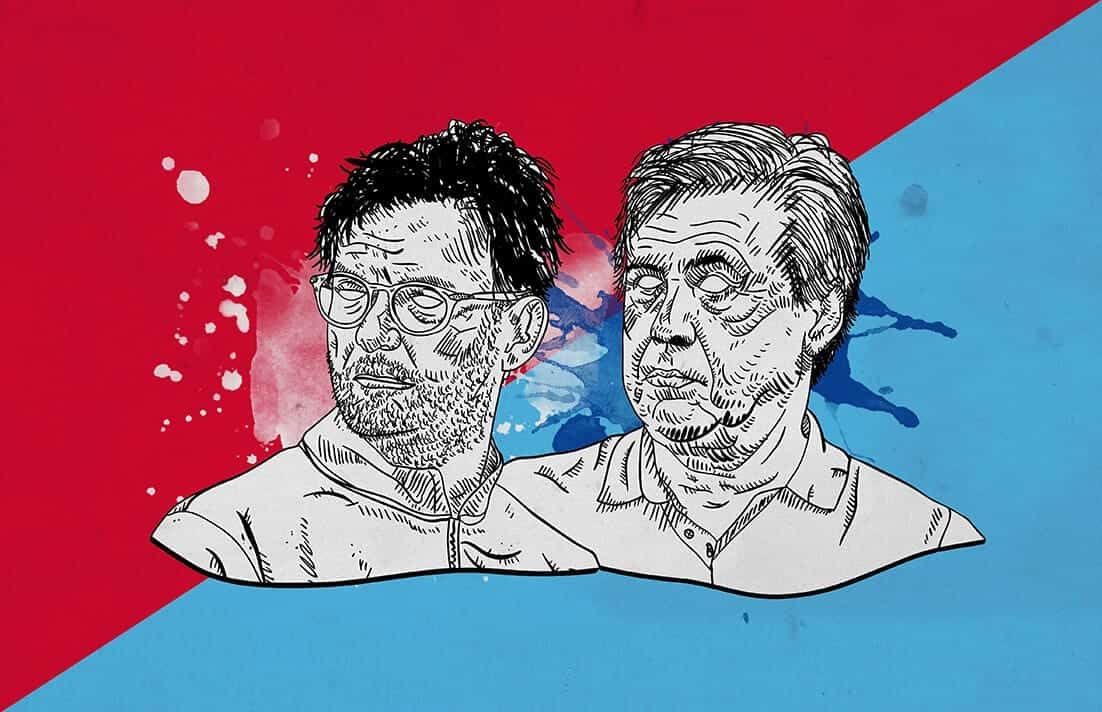In one of Liverpool’s best performances of the season, the Reds sealed their qualification to the knockout stages of the Champions League in a fascinating and dramatic final group stage encounter against Napoli. As things stood, Klopp’s side needed to win without conceding, otherwise, they’d have to score two more than the opposition due to the away goals rule. Having lost 1-0 in Naples, the current Premier League leaders needed to make a statement and dismantle the tactics that troubled them so much in their first of the three seasonal defeats.
Klopp thus opted for the same eleven fielded in Italy, barring Naby Keita and Joe Gomez, who were replaced by Matip and Wijnaldum. Ancelotti instead, made no changes, as Napoli deployed their habitual men.
(Liverpool): Alisson; Alexander-Arnold, Matip, Van Djik, Robertson; Wijnaldum, Milner, Henderson; Salah, Firmino, Mané.
(Napoli): Ospina; Koulibaly, Albiol, Maksimovic; Mario Rui, Hamsik, Allan, Callejon; Fabian Ruiz, Insigne; Mertens.
Intensity
Liverpool’s game-plan revolved around the intensity that has typified Klopp’s game over the year, carried out throughout the game at an almost unimaginable rate. The German coach even explained why the only way to stop Napoli was by retaining the ball by pressing immediately to avoid being outnumbered in midfield in a 3v4 in the post-match press conference; during possession, in fact, Fabian Ruiz cuts inside the left half-space whilst Insigne drops on either side of the pivot. This situation would have allowed the visitors to have perpetual options between the lines and be able to manipulate Liverpool’s midfielders, as well as having a free-man on the ball by pinning their marker.

The picture above exemplifies the aforementioned scenario; Fabian Ruiz moves out of Salah’s cover-shadow and receives in the half-space, forcing Alexander-Arnold to step out and opening a gap for Mario Rui to exploit.
 Napoli’s numerical superiority in midfield.
Napoli’s numerical superiority in midfield.
Thus, Napoli were often able to achieve positional superiority and, either free the left flank for Mario Rui’s overlaps or create space centrally for Ruiz, Insigne and Mertens to combine, with occasional runs from the midfielders.
To overcome the issue Liverpool was forced to increase the rhythm and constantly attack in a way which we might have not been completely used to this season, as Klopp’s side has adapted to the circumstances (such as defensive lapses due to the almost unsustainable pace) that often troubled them in the past by adopting a less intense pressing style, or at least, not a consistent during the entire 90 minutes. It’s become common to see the Reds sit in a mid-block press and cut passing lanes into the defensive shape, making the opponents re-circulate as they look for a solution to bypass Liverpool’s lines. On the other hand, due to the events explained above, an adaptation was required, and Klopp reversed to his old ways.

Liverpool’s man-oriented high-press.
To prevent Napoli from forming the shape that posed Liverpool such a threat in the first minutes of the match, Liverpool had to stop the cause from its roots, in that, the build-up. Since Napoli’s formation resembles somewhat of a 3-4-2-1 in possession, Liverpool’s 4-3-3 was perfectly matched with the opposition’s positions, and each man had a direct marking option. The front three pressed the back-three, the central midfielders stepped out on the double pivot, whereas the full-backs marked the wing-backs and the pivot-centre-backs triangle took care of the inside forwards and striker.
This defensive triangle was also key in rest-defence to stop dangerous counters in case the counter-pressing (rather effective due to an optimal staggering on the ball) failed. In the final third the full-backs provided width, the wingers played in the half-spaces and Firmino roamed around the ball, protected by two lines; the first being formed by Wijnaldum and Milner, who mainly recycled possession and switched play to the far-side after having collapsed on the ball-side, and the second by Henderson, slightly deeper, who covered the space behind the players involved in the attack and marked the closest striker.
This provided Klopp’s team with a compact structure from which the players could immediately pounce on second balls or collapse around the ball-carrier after having lost possession. Napoli’s block, squashed around the penalty box also facilitated the counter-pressing, as the lack of men staggered on different lines made it hard to progress play and evade pressure. Conversely, Liverpool’s forwards’ high positioning gave the home side progressive options in transition whenever they recovered possession.
Napoli’s defensive shape
Starting from a 4-4-2 mid-block shape, Ancelotti’s men responded to pressing triggers whenever the opposition played a backpass or a horizontal pass between the centre-backs, looking to recover possession high and counter immediately with their fast attackers. The ball-side forward screened Henderson during his pressing run, and when the ball reached wide areas, the wingers positioned themselves slightly centrally oriented in their body shape, to prevent diagonal passes into the middle (where Firmino would drop to receive and draw the centre-backs out of position for the space behind them to be attacked by the wide forwards).
Alisson, however, wasn’t pressed, as the Napoli players preferred to stay close to their man and cut out possible passing options. The home side soon found a solution, though, and as the ball-side centre-midfielder spread wide, attracting the full-back, and Firmino sporadically dropped on the second line to occupy the double pivot, act as a link between midfield and attack and/or draw a centre-back out of position, they were able to free the wingers and open a channel between full-back and centre-back to access them. Napoli had quite some problems at covering the half-spaces and Liverpool were particularly effective at positioning a man behind the midfield line in the aforementioned space to play lay-offs or connect with the forwards. This plan also allowed Salah to exploit his qualitative superiority against Mario Rui in multiple situations, like on the Egyptian’s 1-0 goal.

Milner drifts wide and attracts Maksimovic out of position, creating space for Mane to position himself, creating a passing lane, and subsequently, receive in.
Conclusion
The second half saw Ancelotti make some adjustments to react to Liverpool’s domination. Firstly, Napoli increased the pressing’s intensity and height, by stepping out aggressively on The Reds’ first line, which forced the backline into more long-balls. This didn’t derail Klopp’s plan, however, as verticality is the main feature of the German manager’s game, and therefore Liverpool was well suited to attacking the second balls, usually after a header or lay-off from Firmino.
Furthermore, Napoli switched to a back four to try to restore a more patient and press resistant circulation, however, Liverpool was able to adapt to the change in shape and push the visitors to the flanks where they’d be squeezed and forced into long balls.
Klopp’s intensity turned out to be the winning recipe to which Ancelotti failed to respond to, or rather, tried to match, but came out defeated against a side built for such a strategy. Just like in 2013, Napoli were eliminated from the Champions League despite having performed at a very high level against stronger (on paper, at least) opposition. Whilst the disappointment will probably live in the players’ and fans’ minds for some time, it’s a chance for the Naples based club to focus on a competition they could potentially challenge for as one of the favourites, looking for that elusive trophy to certify a cycle of players who’ve taken Napoli to new heights, being able to compete with some of the richest and best clubs across Europe.
Although games played at such a high intensity are a rarity throughout the course of the season, Liverpool’s peak has proved yet again to be impossible to match, and, in a season in which Klopp is expected to deliver trophies, with Liverpool sitting first in the Premier League, and being qualified to the Champions League round of sixteen, they couldn’t be in a better spot to chase their goal.
If you love tactical analysis, then you’ll love the digital magazines from totalfootballanalysis.com – a guaranteed 100+ pages of pure tactical analysis covering topics from the Premier League, Serie A, La Liga, Bundesliga and many, many more. Get your copy of the FIRST of two December issues for just £4.99 here or preorder the SECOND of the December issues with an annual membership right here.






Comments